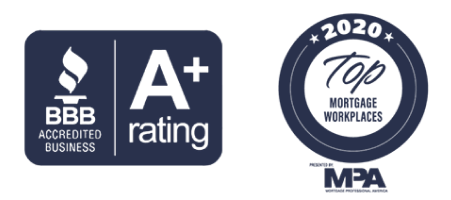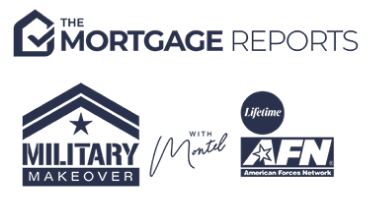Can Construction Loans Be Extended? A Comprehensive Guide to Timelines, Lenders, and Options
Imagine breaking ground on your dream home only to realize halfway through that your construction loan might expire before you finish.
Even worse, the broker who sold you that loan is gone—long gone with their commission—leaving you stranded with no way to extend, no guidance through delays, and no simple path to refinancing an unfinished house.
When a lender denies a timeline extension mid-build, you could face the nightmare scenario of scrambling for funds you can’t secure quickly.
That’s why choosing the right financing partner from the start is essential. If your loan ends up in the hands of someone uninvested in seeing you across the finish line, you might be stuck with mounting bills, a half-built property, and zero recourse.
By working with a direct lender who remains involved throughout every draw, inspection, and budget update, you gain a steadfast ally ready to help when delays, cost overruns, or complications arise.
So, can construction loans be extended?
Absolutely.
But it’s about more than just extending the loan—it’s about choosing a lender who supports you from day one, ensuring you won’t have to abandon your build or pay for an unfinished house. Let’s walk through everything you need to know to avoid these pitfalls and keep your dream project on track.
Understanding Construction Loans
A construction loan is designed to fund the creation of a new residential or commercial property, covering land acquisition, labor, materials, and other related expenses. These loans typically operate on a short-term timetable—often 6 to 18 months—and release funds in “draws” as each build stage is completed.
Why This Matters: Once the ground is broken, how smoothly you manage draws and timelines can directly impact your ability to complete the project on time. If your lender is unresponsive or disappears, the entire build can grind to a halt.
Definition and Purpose
Incremental Funding: You pay interest only on the amounts drawn at each construction milestone.
Oversight and Security: Lenders monitor progress before releasing further funds, reducing their risk.
Bridge to Permanent Financing: Once construction is complete, most construction loans must be refinanced or fully paid off.
Choosing a lender who stays connected through the entire draw process ensures you have immediate support. If complications arise—like contractor disputes or material delays—you’ll want a financial partner who actually picks up the phone and helps find solutions rather than leaving you to navigate alone.
Exploring the Question—Can Construction Loans Be Extended?
Can construction loans be extended without derailing your entire timeline or forcing a costly refinance? Yes—if you’ve aligned yourself with the right lender from the start.
Builders often face unexpected setbacks, such as delayed materials or uncooperative weather. Lenders familiar with these realities are typically more willing to grant an extension if you present valid documentation and updated timelines.
However, if you initially worked with a broker who has already sold off your loan, you might find they have little incentive or ability to advocate when you need more time.
This is where the choice of lender matters most: a direct institution that remains accountable from day one can streamline the extension process and keep your build on track.
Factors That Affect Your Chances of an Extension
Every construction project has moving parts that can make or break your extension request. Understanding common stumbling blocks can help you prepare a solid case ahead of deadlines.
Project Timelines & Milestones
Lenders agree to a specific timeframe. You must show credible reasons for delays if your build is behind schedule.
A realistic, thoroughly documented plan from the outset boosts your reliability.
Unexpected Construction Delays
Hidden structural issues, additional permits, or subcontractor shortages can quickly add weeks or months.
Detailed records of these hiccups and how you’re addressing them help prove you’re doing your due diligence.
Weather Interference
Storms, floods, or extreme temperatures may halt exterior construction entirely.
Providing weather logs or photographic proof strengthens your claim for more time.
When you work with a hands-on lender, they’ll already know these hurdles because they’re tracking progress through each draw. That involvement makes extending the loan a more seamless conversation.
Loan Extension Options and Considerations
If you see the clock ticking and know you won’t finish within the original timeframe, communicating with your lender early is key. This is where a lender invested in your project’s outcome truly shines.
Negotiating an Extension
Valid Reasons: Support your request with thorough documentation, such as contractor notes, inspection results, or proof of weather delays.
Revised Timelines & Budgets: Show updated plans that factor in any new hurdles or cost overruns.
Collaborative Approach: Lenders are more flexible when you communicate honestly and proactively, demonstrating a commitment to completing the build responsibly.
Potential Consequences
Interest Rate Increases: If market rates have risen, your lender may adjust the rate for an extended period.
Additional Fees: You could face administrative or extension-specific charges, which you should weigh against the cost of potentially stopping mid-construction.
A direct lender with a vested interest in seeing your build through is far more likely to find a workable solution than a broker who’s out of the picture once their commission is secured.
The Risk of Relying on the Wrong Financing Partner
Choosing a broker might seem convenient initially, but if they sell off your loan, you can be left high and dry:
Lack of Ongoing Support: If the extension is denied, your broker will not have the authority or motivation to intervene.
Difficult Mid-Build Refinancing: Getting a new lender to finance a half-finished house can be challenging. It often involves re-qualification, new appraisals, and strict underwriting. Most lenders won’t touch this program; they see it as picking up someone else’s mess with too many unknowns.
Potential Project Abandonment: If the broker’s successor (the new lender) doesn’t offer extensions or support, you could pause work indefinitely, or worse, be forced into a hard money lender with high rates to fix the property or lose it altogether.
This scenario can be avoided by partnering with a direct lender who keeps your loan in-house. If delays arise, they’ll work with you on solutions rather than leaving you in limbo.
Potential Consequences of a Construction Loan Extension
Even if your lender approves an extension, be prepared for changes:
Higher Interest Rates
If you’re extending during a period where overall market rates have climbed, expect your new rate to reflect current trends.
This can impact the total amount you pay over the life of the loan.
Additional Fees
Administrative or processing fees are typical for loan modifications.
You might need an updated inspection or appraisal to confirm the home’s progress and current value.
Despite these extra costs, an extension can be a lifesaver compared to trying to refinance an unfinished build or, worse, halting the project entirely.
Alternative Solutions Beyond Loan Extensions
Sometimes, an extension isn’t the best fit—or your lender may be unwilling to negotiate favorable terms. If that happens, consider other routes.
Refinancing Options
Refinancing involves swapping your existing construction loan for a new one, potentially with better terms:
Lower Interest Rates: If market conditions have shifted, you might save money over the long haul.
Longer Repayment Terms: Stretching out the payback period can reduce monthly pressures.
Consolidating Multiple Loans: Roll land and construction costs into one to simplify payments.
But keep in mind: Refinancing a half-finished house is notoriously tricky. Many lenders won’t touch a property mid-construction, so ensure you explore an extension first—especially with a supportive institution that wants you to succeed
Effective Management of Construction Loans
Staying on top of details is the best way to reduce the need for an extension or to justify one if necessary.
Open Communication: Update your lender regularly. A direct lender will have a dedicated team to assist with draws, timeline changes, and any issues.
Accurate Budget Tracking: Monitor labor, materials, permits, and everything else. Overages can sneak up quickly, so keep an eye on each invoice.
Timely Issue Resolution: Address contractor disputes or unforeseen site problems immediately. Quick action shows responsibility and dedication to project success.
Professional Team Vetting: Work only with reputable builders with a solid track record of meeting timelines. A direct lender can often help you vet potential contractors upfront, reducing the risk of costly delays.
When your lender actively engages in every step, minor problems get caught early before they become significant setbacks requiring an extension or a total loan restructure.
A Typical Scenario in Loan Extensions
Smith Construction Company (not the real builder’s name) faced a double blow: a sudden zoning hold and a month of unrelenting storms. With the end date of their loan fast approaching, they worried about running out of funds. Fortunately, they’d chosen a direct lender who stayed involved from ground break onward:
Transparent Updates: Smith Construction kept open lines of communication, sending weather reports and revised blueprints.
Timely Intervention: We immediately reassessed the timeline and initiated an extension, preventing a forced refinance on a partially completed building.
Successful Outcome: The loan was extended with minimal fees, allowing the project to finish on schedule once the weather cleared.
Key Takeaways
Early, honest updates build trust.
An engaged lender like us who never leaves your side is more willing to work through problems.
Extensions are far more straightforward when you haven’t passed your loan to multiple parties.
You won’t have this with brokers; most have never even closed a construction loan, and that’s scary, too.
Take the Next Step with Your Construction Loan
Don’t let unforeseen complications or an uninvested broker derail your home-building journey. Whether you need more time to finish the project or want a safety net in case of delays, choosing the right partner from day one is crucial. With our in-house team:
We Stay Through Every Draw: Our bankers walk you through each phase and provide real-time support if something goes wrong.
Flexible Solutions: When life or weather happens, we can discuss loan extensions or adjustments without stranding you.
Builder Vetting: We help confirm your builder can meet deadlines and expectations—avoiding painful surprises later.
If you’re serious about safeguarding your investment, controlling your budget, and ensuring no timeline pitfalls stand in the way of finishing your dream home, contact us today. We’re here to help you navigate each draw, each inspection, and—if necessary—each extension, all with a single, committed team from start to finish.
If you wish to calculate payments, please use our home construction loan calculator.
Frequently Asked Questions (FAQ)
-
Typical construction loans last for 6-12 months, however, other lenders like us allow up to 18 months for larger projects. Construction loan extensions may apply in certain circumstances that cause loans to run longer.
-
This is the exact nightmare scenario you want to avoid. Brokers often sell your loan after closing. If they’re gone, you may be stuck negotiating with an entirely different institution—or one uninterested in offering an extension.
-
No extension is guaranteed, but direct lenders who keep your loan in-house are typically more flexible and approachable. They’re also more invested in completing the project without forcing you to refinance mid-construction.
-
Refinancing a partially built home is difficult because many lenders won’t agree to finance an unfinished property. Underwriting such a scenario carries unique risks, so it’s better to solve extension or budget issues early with your existing lender.
-
Have detailed records of delays (such as contractor statements or weather reports), an updated timeline, and a revised budget. Clear documentation and proactive communication are key.
-
It can. Extensions often come with new terms, including a higher interest rate if the market has shifted or your lender deems the project higher risk.
-
You may face loan default if you can’t refinance or otherwise pay off the balance. This is why choosing a supportive, in-house lender upfront is crucial—you’ll have more avenues to resolve any timeline or budget shortfalls without jeopardizing the entire build.














